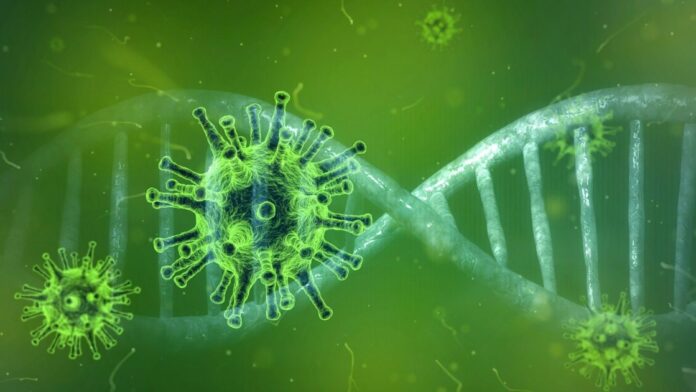The first study to analyze the structure of the novel coronavirus from two waves of infection in a major city found that a more contagious strain dominates recent samples, researchers from Houston Methodist Hospital said on Wednesday.
They examined more than 5,000 genomes from viruses recovered in the earliest phase of the pandemic in Houston, an ethnically diverse city of seven million, and from an ongoing more recent wave of infections.
The study, which has not yet been reviewed by outside experts, found that nearly all strains in the second wave had a mutation, known as D614G, which has been shown to increase the number of ‘spikes’ on the crown-shaped virus.
The spikes are what allow the virus to bind to and infect cells, increasing the ability of the mutated virus to infect cells.
The Houston researchers said patients infected with the variant strain had significantly higher amounts of the virus on initial diagnosis.
But they found little evidence that mutations in the virus have made it deadlier, noting that severity of COVID-19, the disease caused by the virus, was more strongly linked to patients’ underlying medical conditions and genetics.
They also said some regions of the spike protein – the primary target of coronavirus vaccines now in development – showed several mutations, possibly indicating that the virus is changing in order to evade the body’s immune response.
Previous studies have shown that the coronavirus is mutating and evolving as it adapts to its human hosts.
Scientists around the world noted as early as May that the D614G strain had become dominant in most counties with high coronavirus case numbers, including the US.
It swiftly rose to the top of the viral food chain in New York City, Italy and the UK, while the West Coast of the US was primarily battling a strain thought to be 10 times less infectious than D614G.
But New York City is no longer the pandemic epicenter it was in the spring.
Instead, sunbelt states like Texas, Arizona and Florida became the hardest-hit in the nation in the late spring and summer.
Texas is still reporting nearly 3,000 new infections a day, as of Wednesday, and more than 100 daily fatalities.
Public health experts believe the state is now its second wave of coronavirus, and Harris County – where the sprawling metropolitan of Houston is located – continues to be the hardest hit.
And the new study, posted to the online pre-publication repository, MedRxiv.org, provides a clue as to why.
The D614G strain of coronavirus is characterized by portions of the viral genome that code for modifications to the spike protein.
The ‘G’ portion, in particular, was found in 99 percent of samples tested by the Houston Methodist scientists.
‘Strains with a Gly614 amino acid replacement in the spike protein, a polymorphism that has been linked to increased transmission and in vitro cell infectivity, increased significantly over time and caused virtually all COVID-19 cases in the massive second disease wave, the study authors wrote.
They added the patients who had this variation of the virus had much higher viral loads in their noses when they tested positive for COVID-19.
Higher viral loads increase the odds that someone’s coughs or sneezes will spread the virus.
And in the lab, neutralizing antibodies that might stop other strains of coronavirus from infecting human cells had less effect on the D614G variant.


